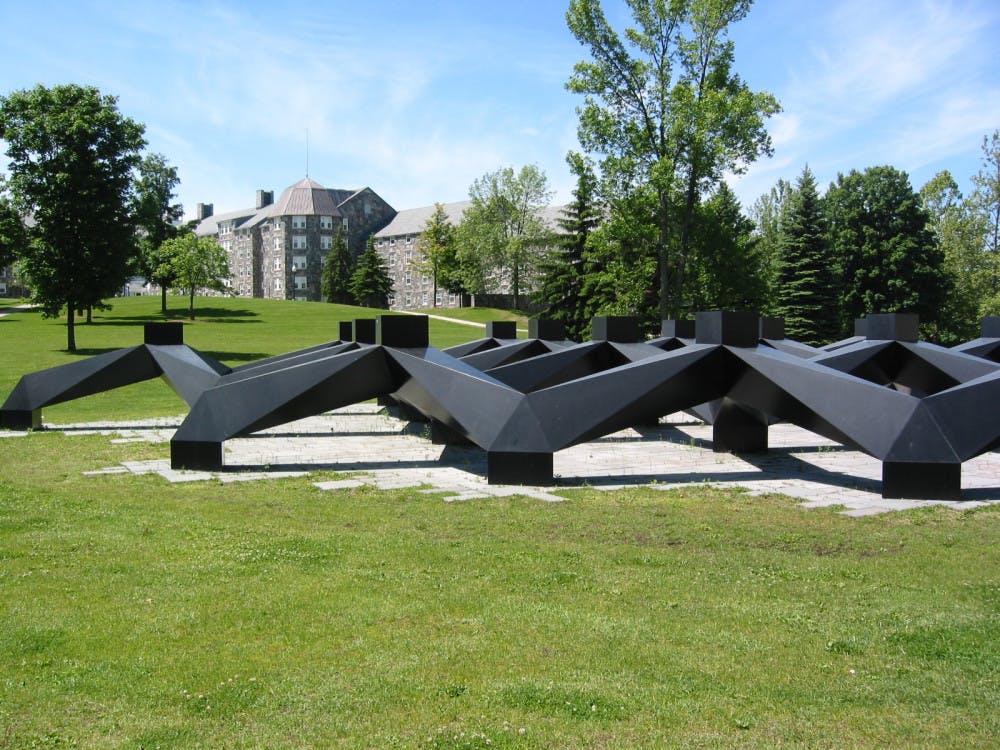
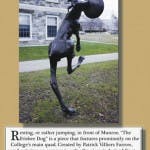
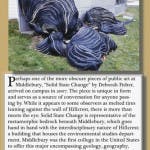
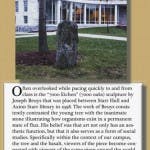
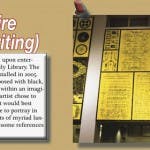
In the fall of 1994, Middlebury’s President Emeritus John McCardell Jr. and the College’s Board of Trustees instituted the “One Percent for Art” policy. This policy sets aside one percent of the cost of any capital project — including the construction of new buildings and the renovation of existing campus infrastrcture — that exceeds $1 million in cost. These funds are used for the purchase, installation and maintenance of works of art publicly displayed on campus.
Familiar works of arts including “Frisbee Dog” in front of Munroe, “Smog” in front of McCardell Bicentennial Hall and “Solid State Change” next to the Franklin Environmental Center at Hillcrest were all purchased using funds set aside as a result of this policy. The policy’s aims include developing and completing the identity of the institution as well as enhancing the aesthetic and educational mission of the public arts on campus.
The One Percent funds are managed by the Committee on Art in Public Places (CAPP). The committee is comprised of faculty members, students, administrators and trustees of the College.
The CAPP is responsible for both evaluating and approving gifts of art that are intended for public display at the college, as well as purchasing new works art. In all instances, a majority vote of CAPP members is required for any work to be accepted as a gift or purchased using One Percent funds.
Since the economic downturn, the College administration has suspended the One Percent for Art policy. Currently, the maintenance of public art pieces already on campus is still supported by the One Percent funds. No new purchases, however, have been made in the past three years.
Richard Saunders, director of the Museum of Art, serves as chair of CAPP. He said that as College finances improve, he hopes the One Percent suspension will soon be overturned.
“Even though the One Percent purchase policy is presently suspended, we do hope that this prohibition on purchases will be rescinded soon. But I do not know when this might happen,” Saunders said.
“I believe the [One Percent for Art Policy] is one of the best initiatives the administration has ever put in place,” said Audrey Tolbert ’13, one of the student representatives serving on the CAPP. “Even under the current suspension of these funds for the purchase of new works, the policy still forces us to take into consideration the visual environment we are curating on our campus.”
“So Inclined,” a public sculpture constructed by Patrick
Dougherty in 2007, was removed last year. The nine towering interconnected cones made of red maple saplings and grey dogwood branches sat at the entrance to the Kevin P. Maaney ’84 Center for the Arts. So Inclined was conceived as a temporary installation, and was intended to be removed once the structure became unstable.
The discussion regarding whether the CAPP’s madate to maintain campus art includes ensuring the presence of tem- porary art has been raised in recent CAPP meetings, following the removal of So Inclined.
If the replacement of now-removed temporary art counts as maintenance, then the CAPP might consider acquiring other temporary art to replace So Inclined regardless of the suspension of the One Percent policy, according to Saunders.
“Since art in public places is a part of the identity of the institution, they should represent different programs of the college,” said Pieter Broucke, professor of the history of art and architecture. “It will be nice if we have more arts that are internationally focused.”
Broucke mentioned that he incorporates a walking tour of campus art in public places for teaching purposes in some of his classes. “These are fabulous pieces that we can learn a lot from,” he said.
Eliza Garrison, professor of the history of art and architecture, said that while most students are aware of some of the art on campus, some pieces are more prominent than others.
“For example, ‘Smog’ near Bi Hall is probably being seen a lot by the science students, while the Joseph Beuys’ ‘7,000 Oaks’ right next to the [Axinn Center at Starr Library] isn’t even really easy to see,” Garrison said.
Due to the freezing of One Percent funds, studio art major Dylan Redford ’14 is looking for an alternative way to promote public arts on campus.
“The public art on campus is stuck in this stagnant state where students don’t recognize Middlebury’s public art as meaningful or intentional,” said Redford, who is also a member of the CAPP. “Most of us have learned to just ignore these public works. I would like to start placing more tempo- rary public art around campus that changes year after year, which would force students to recognize the works and be asked to evaluate its placement and meaning on campus.” Redford said he thinks the administration will reverse the suspension once the student body shows enough interest in public art.
Additional reporting by GABBY GUTMAN; design by OLIVIA ALLEN and MAREA HATHEWAY
Comments

